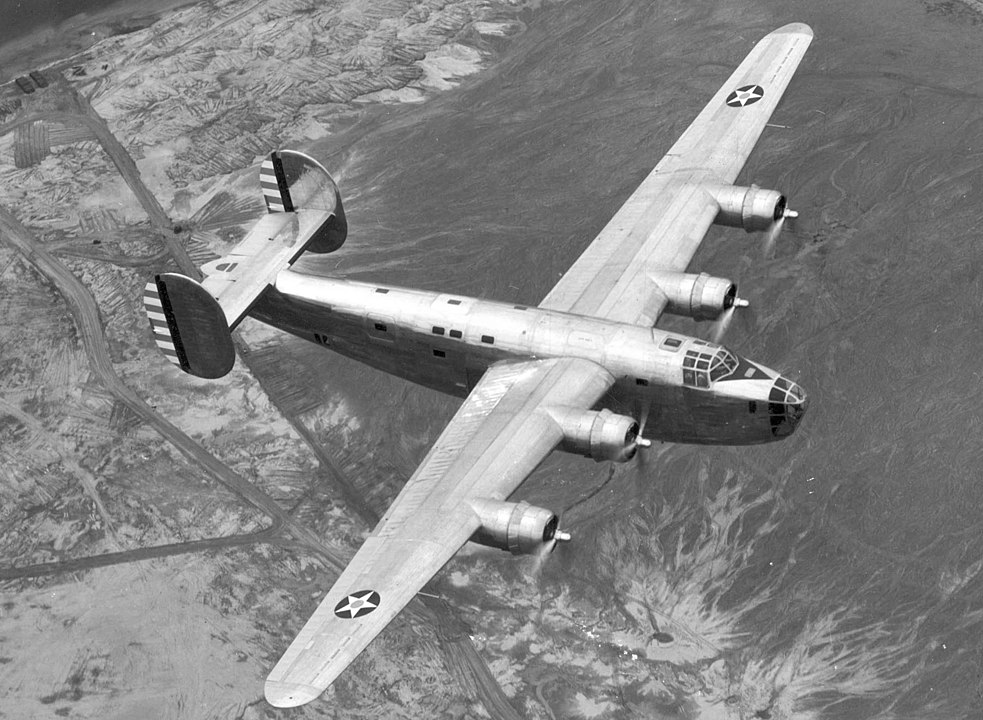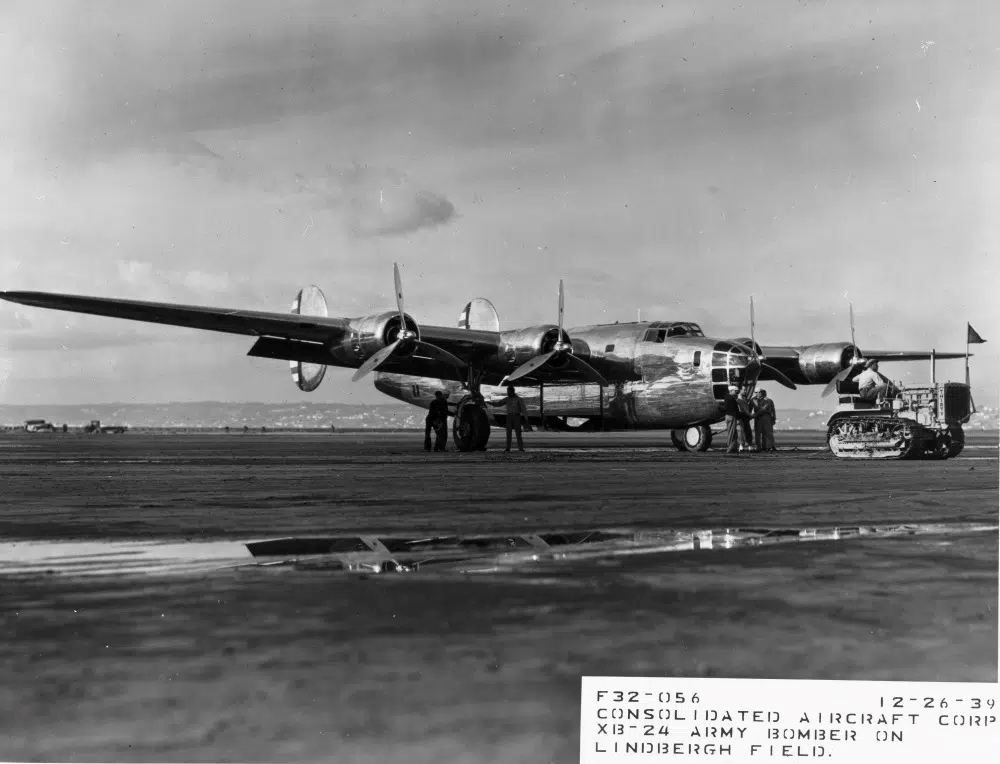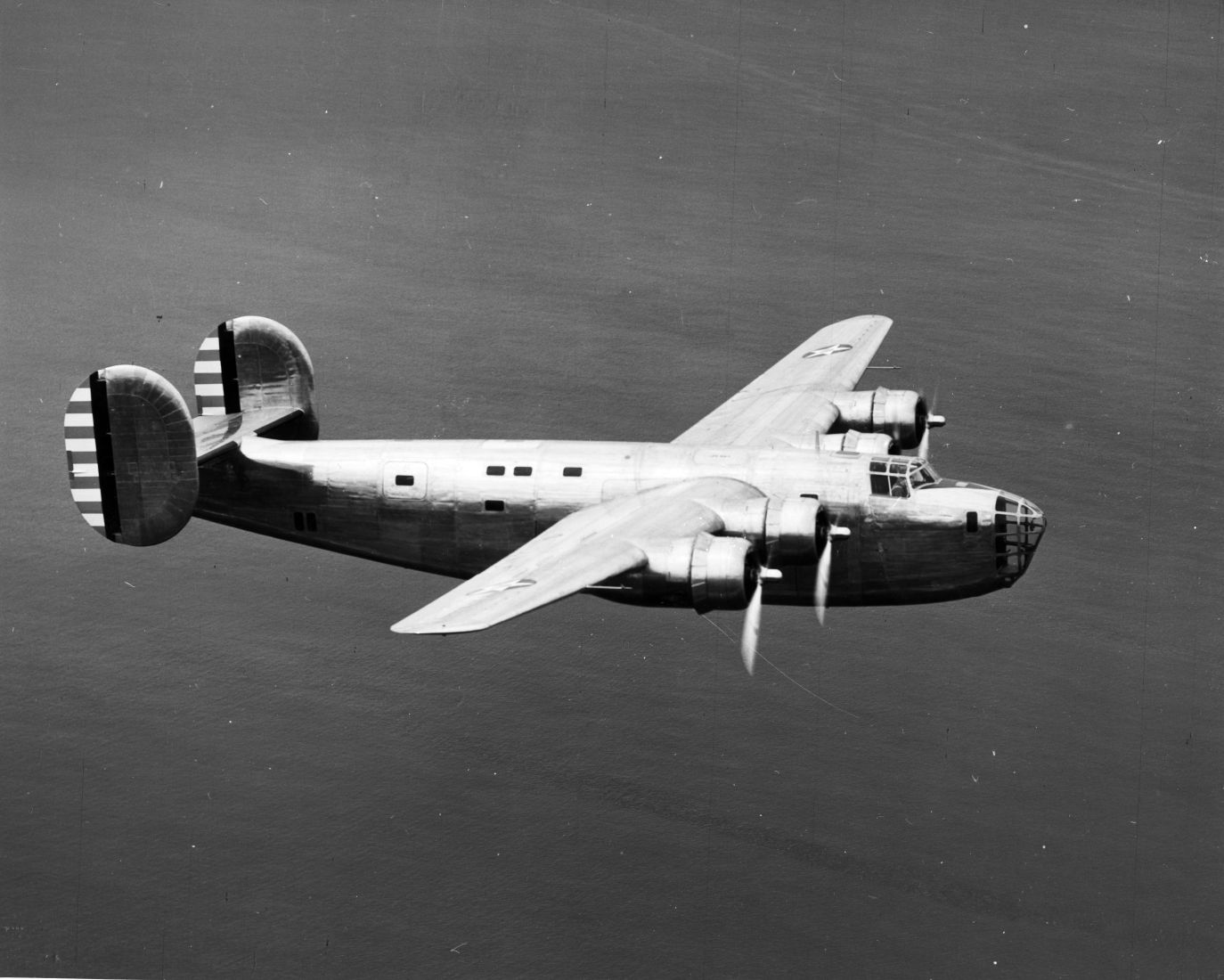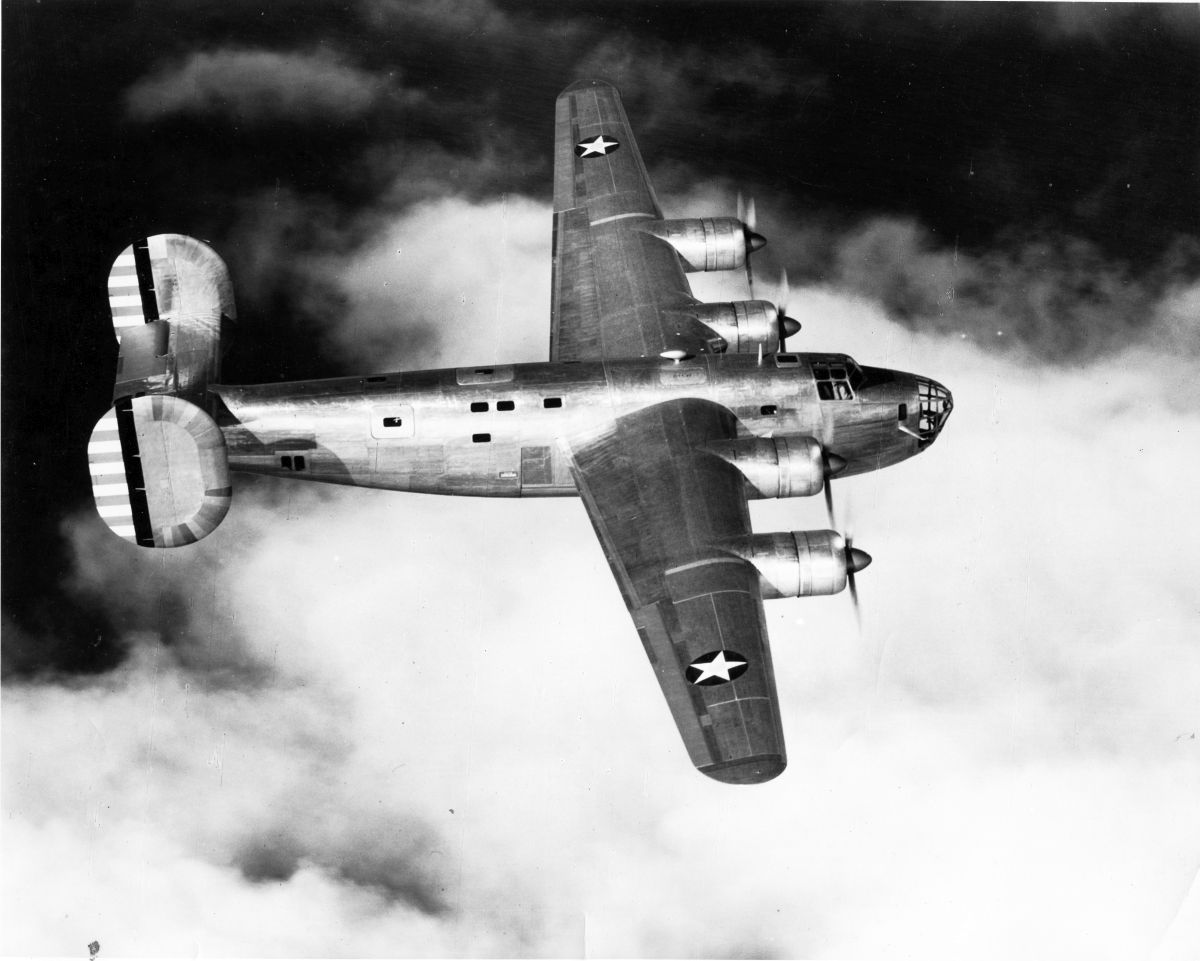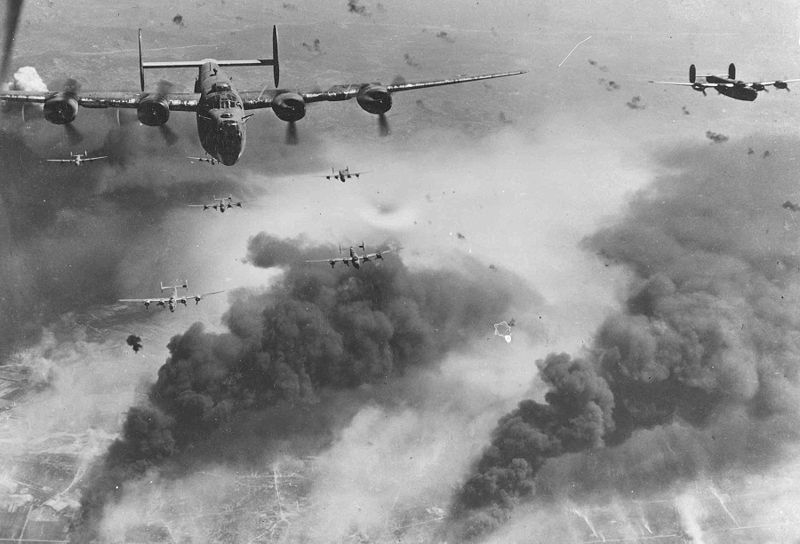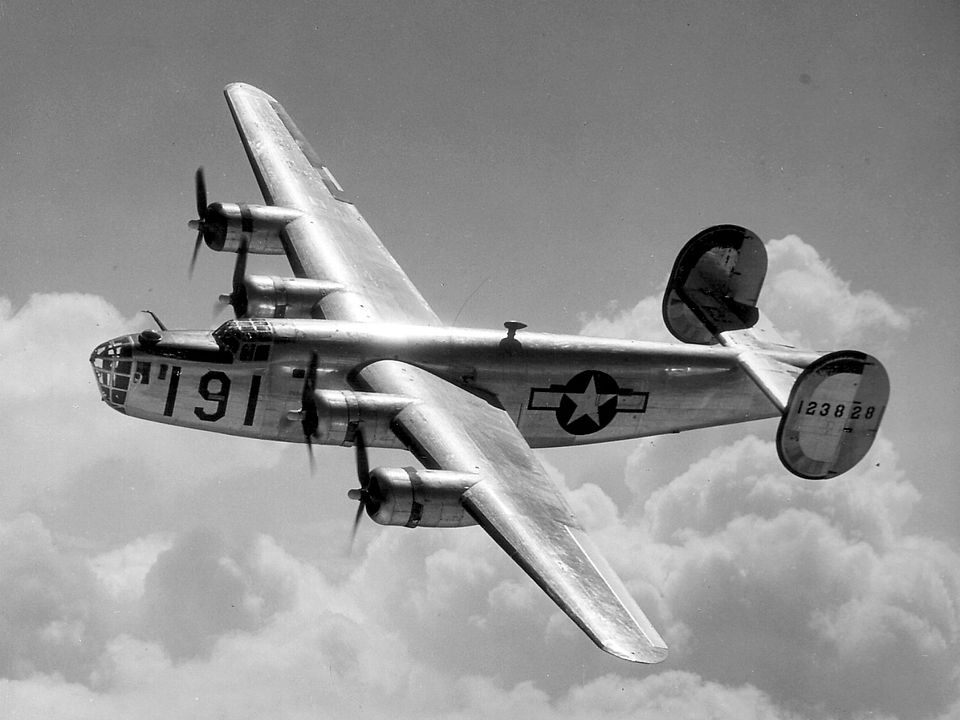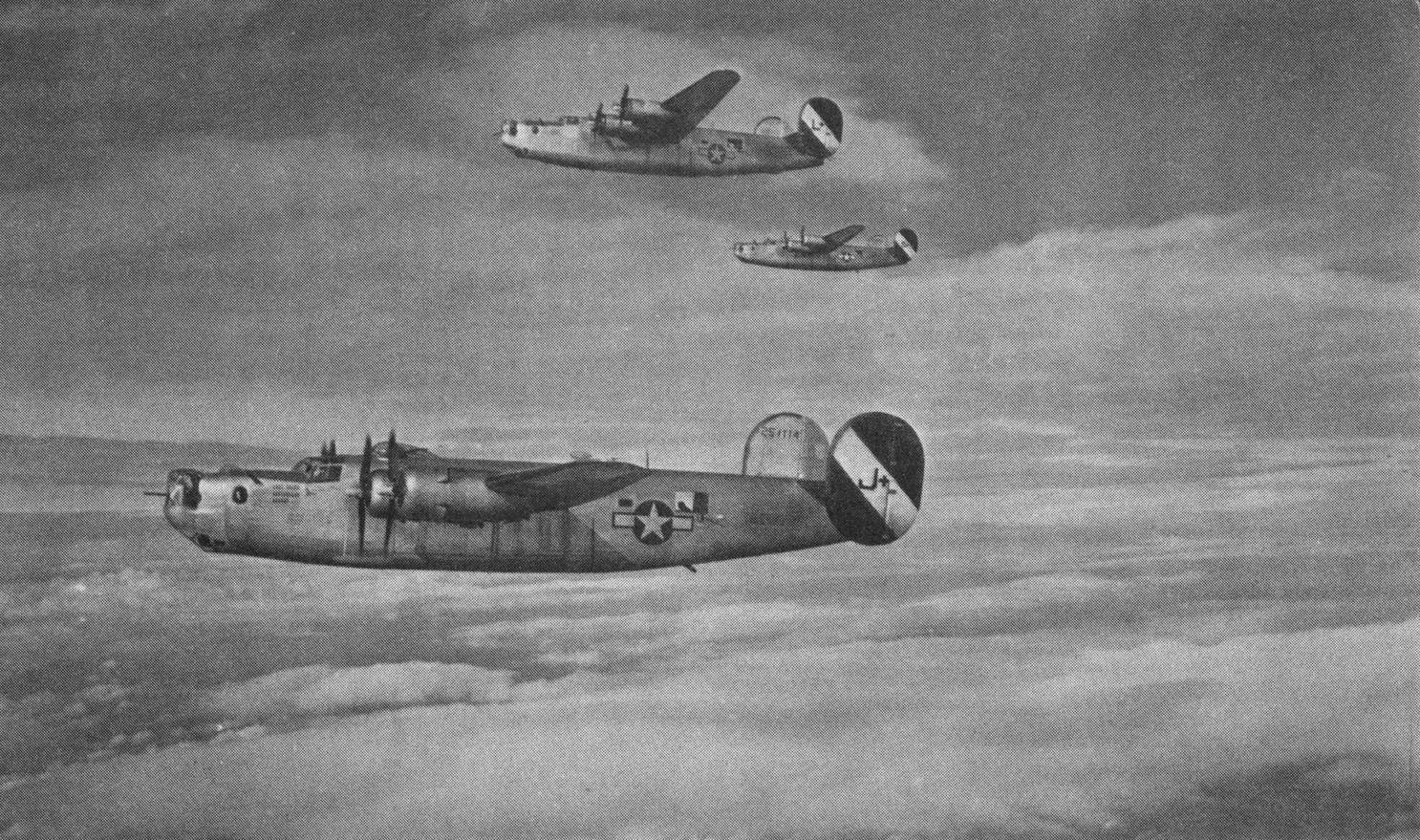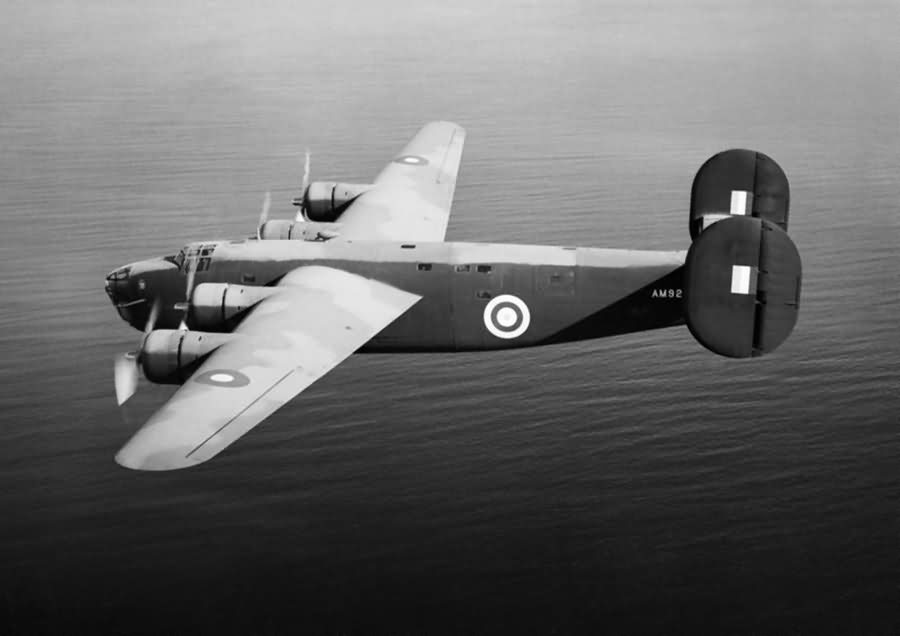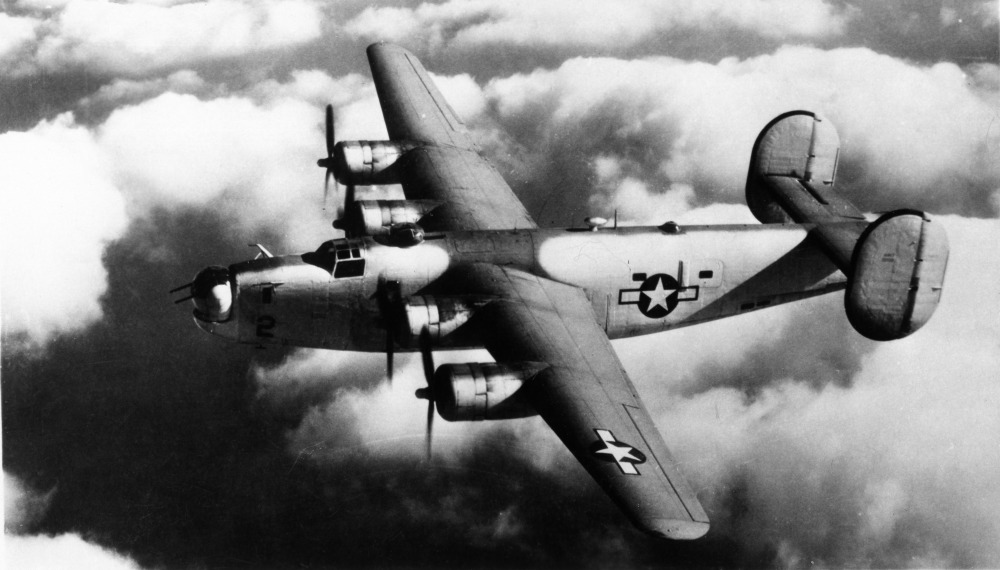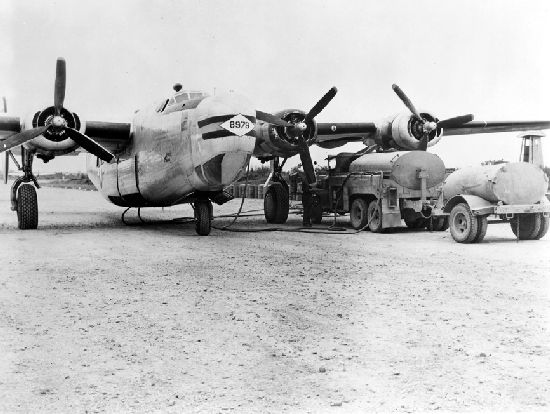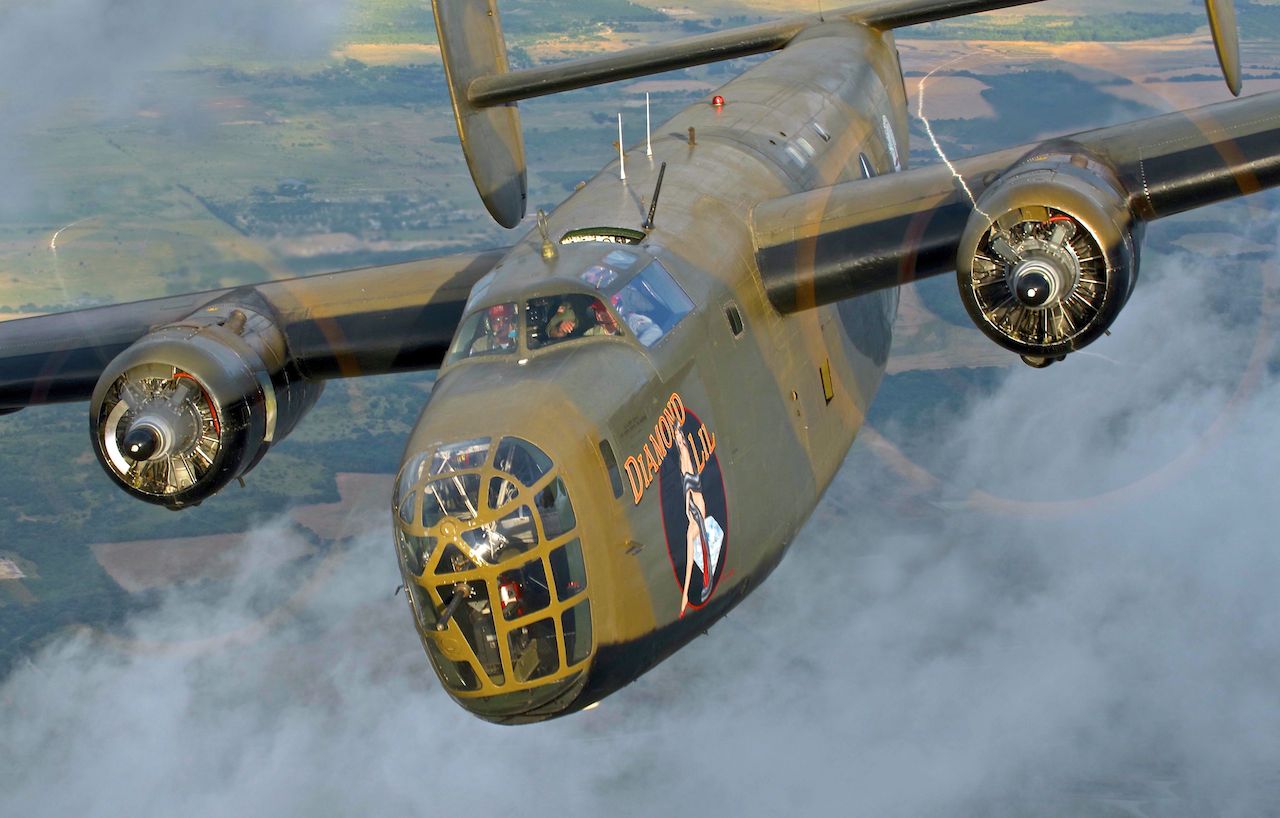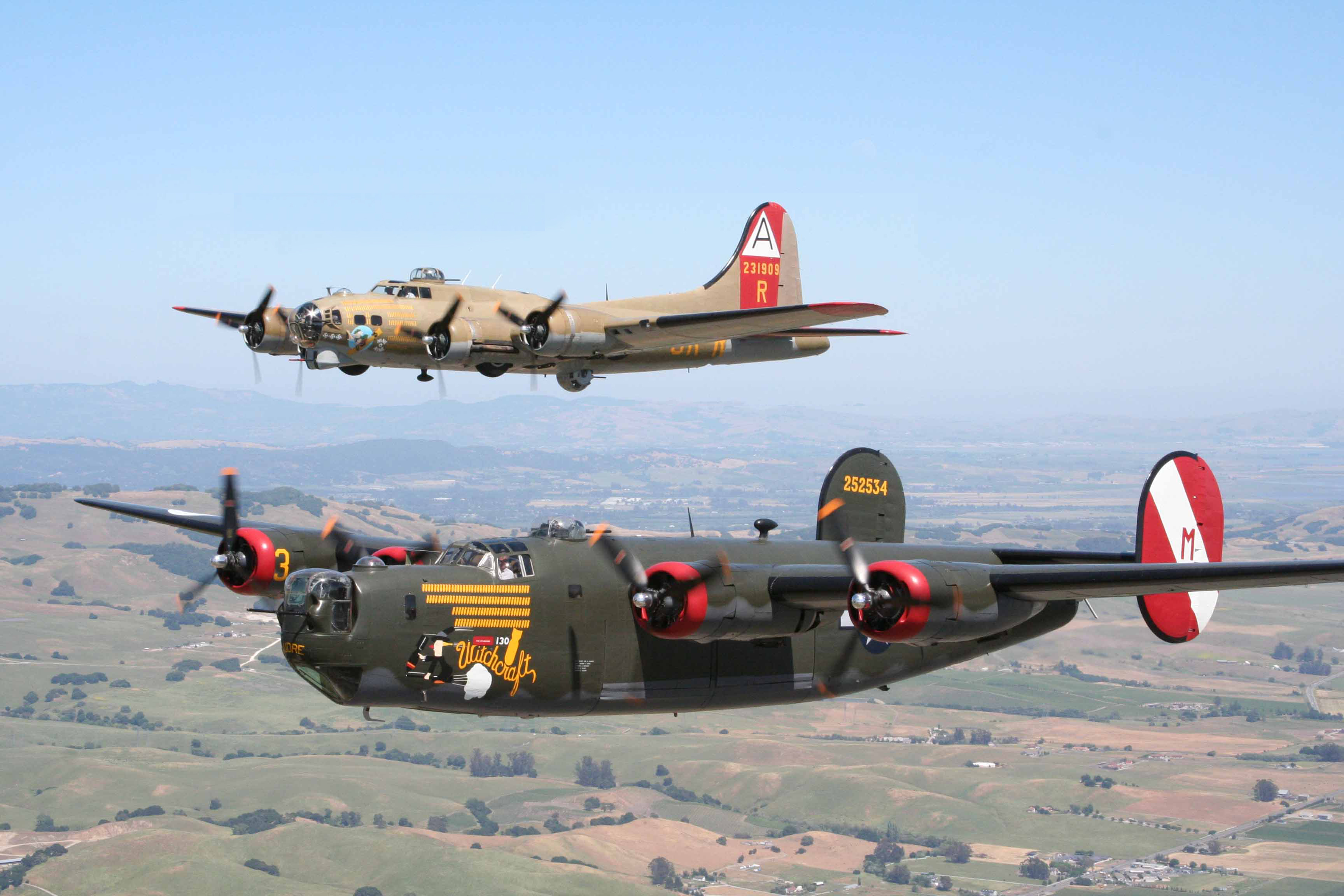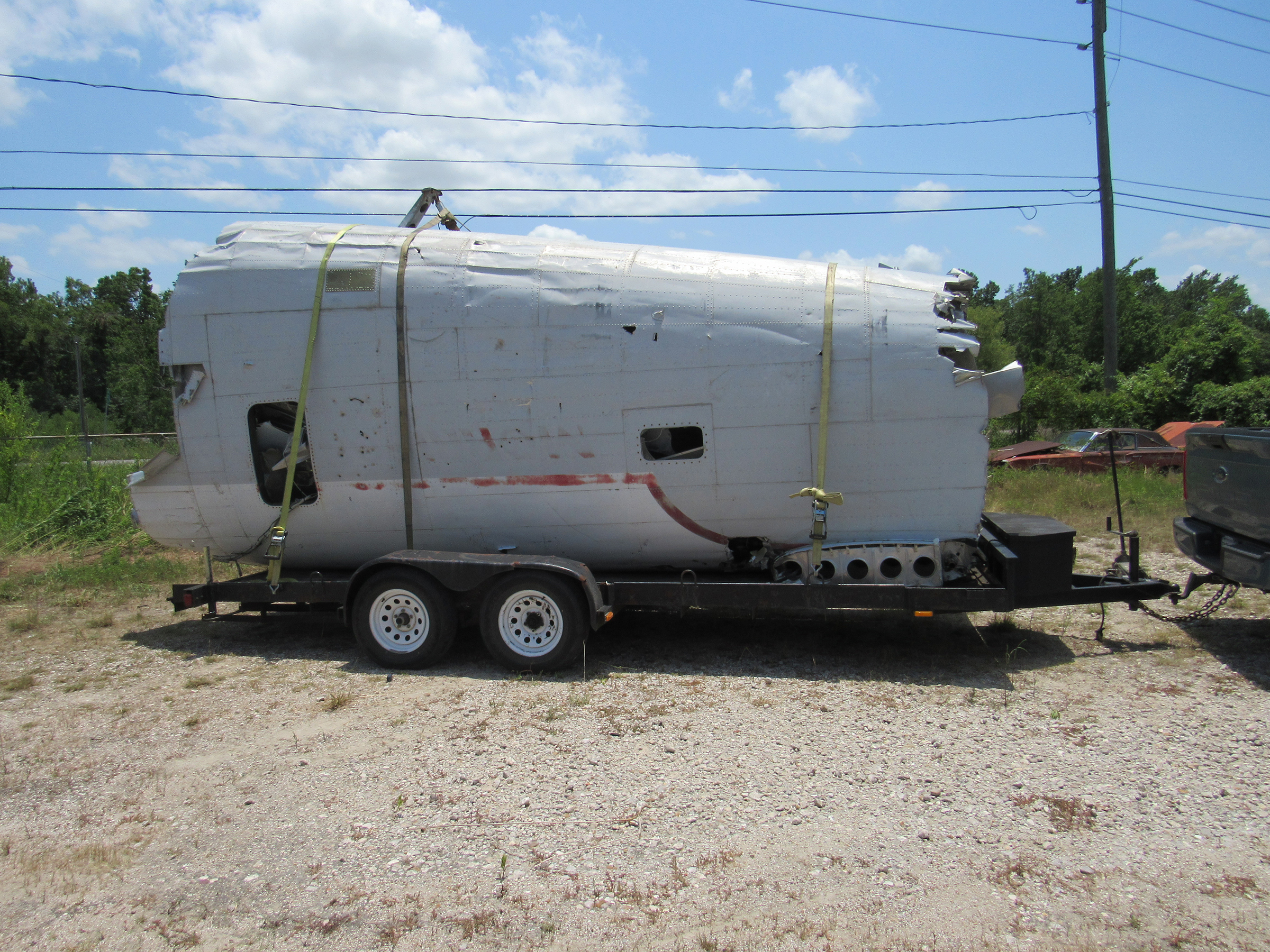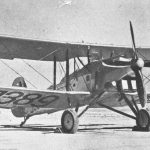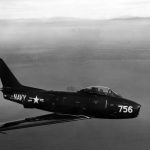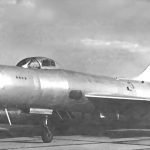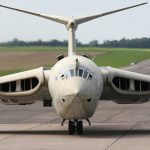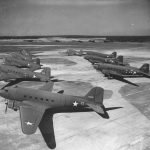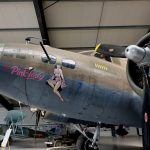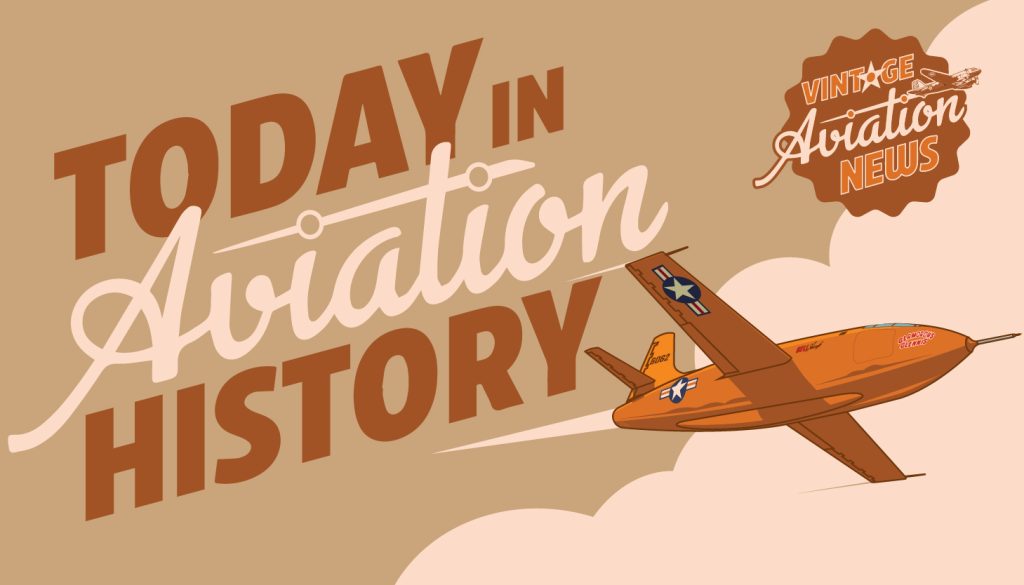
The impetus for developing the B-24 came in 1938, when the US Army Air Corps sought asked the Consolidated Aircraft Corporation of San Diego, California, to build the Air Corps’ newest heavy bomber, the Boeing B-17 Flying Fortress under license. However, when the executive officers at Consolidated, including company founder and president Reuben Fleet, visited the Boeing plant in Seattle, Washington, they determined to build a new bomber, better in performance than the B-17. The company had hired a freelance aeronautical engineer, David R. Davis, who had developed a new wing, whose airfoil had a lower drag co-efficiency than other wing designs of the time, and which had already been used on the company’s Model 31/XP4Y Corregidor flying boat. The Davis Wing allowed for higher speeds and added lift at relatively low angles of attack. The new bomber design, which was internally designated as the Model 32, also adapted the Corregidor’s twin tail design, and had twin internal bomb bays compared to the B-17’s one.
In January 1939, the Army Air Corps formally invited Consolidated to submit a design study for a bomber with longer range, higher speed and greater ceiling than the B-17, and the Consolidated Model 32 would be developed as the XB-24. The first prototype would receive the USAAC serial number 39-556, and on December 29, 1939, it rose from the runway at San Diego’s Lindbergh Field (now San Diego International Airport) for its first flight, which lasted 17 minutes. The crew of four was comprised of William B. “Bill” Wheatley, Consolidated’s Chief Test Pilot, co-pilot George Newman, and flight engineers Jack Kline and Bob Keith.
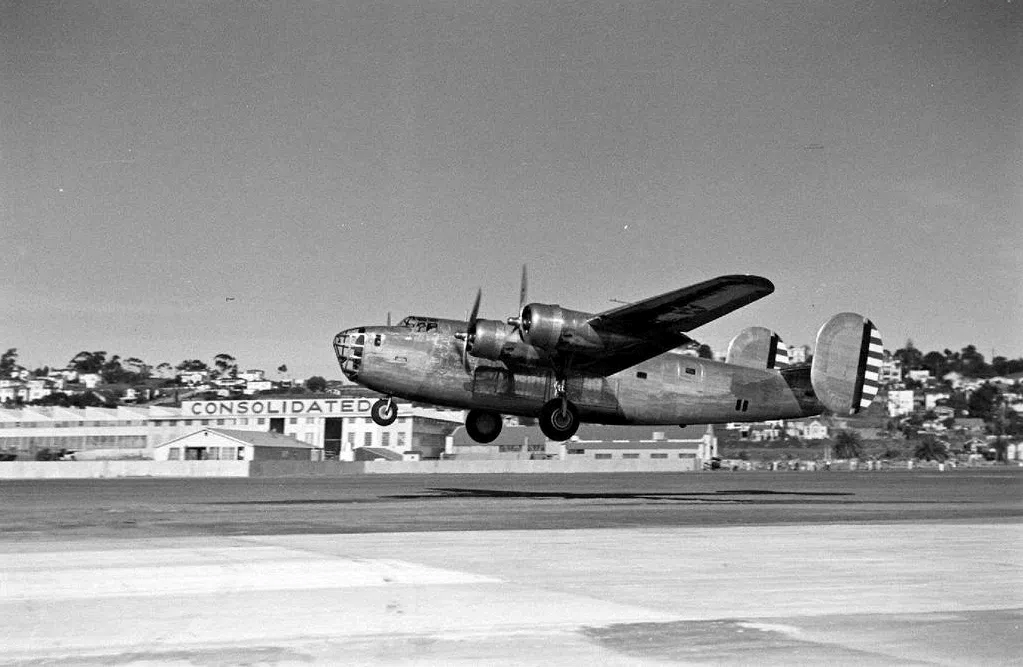
The XB-24’s design top speed was intended to be 311 mph (501 kph), but flight testing showed that it topped out at 273 mph (439 kph). This led to some changes and modifications to the aircraft, from the addition of General Electric B-2 turbo-superchargers for its four Pratt & Whitney R-1830 Twin Wasp radial engines, with the air intakes for the turbo-superchargers being placed on the sides of the engines, the re-positioning of the oil coolers to the flanks of the engine cowlings, giving all later models of the B-24 the distinctive elliptical shape to their engine nacelles, self-sealing fuel tanks, and a larger tailplane. The modified prototype, which could now reach 310 mph (499 kph), was redesignated XB-24B and was issued a new US Army Air Force serial number, 39-680 and delivered to the USAAF on August 13, 1941.
But even the US Army Air Force accepted the B-24, which would be named the Liberator, the design gained the interest of Britain and France. With the fall of France in June 1940, the aircraft built under French contract would join those purchased by the Royal Air Force as Liberator Mk.Is (US designation LB-30). These aircraft were primarily used by RAF Coastal Command to patrol the Atlantic Ocean to search for and destroy German U-boats, while others were flown by British Overseas Airways Corporation (BOAC) as long-range transports. After the United States joined the war as a belligerent power in 1941, B-24 Liberators were built across the United States in massive factories and were flown by American bomber crews in Europe, North Africa, the Mediterranean, and the South Pacific. At one factory built by the Ford Motor Company in Willow Run, Michigan, a B-24 rolled off the production line every 63 minutes. With most military-aged men volunteering or being drafted for the service, B-24 Liberators were built around the clock by women employed as riveters and wiring technicians.
Although the Boeing B-17 earned a greater reputation for ruggedness, the B-24 could still carry a larger bomb load over further distances and while flying faster than the B-17. The most widely produced variant of the Liberator, the B-24J, would carry a crew of 11 (a pilot, co-pilot, navigator, bombardier, radio operator, nose turret, top turret, 2 waist gunners, ball turret, and a tail gunner). Additionally, there were several adaptations of the B-24 pressed into service, such as the C-87 Liberator Express transport aircraft, the C-109 fuel transport, often used to fly avgas from India to China via the Himalayas, and the US Navy and Marine Corps adopted the aircraft as the PB4Y-1. Later, the US Navy ordered a dedicated patrol bomber derived from the PB4Y-1 which became the PB4Y-2 Privateer, which was distinguished by its tall single tail design and two top turrets.
After the war, thousands of Liberators were disposed of in scrapyards to reclaim their metal for peacetime purposes, though some carried on in service around the world, both as patrol bombers and as civilian transport aircraft, but by the 1950s, the once common sight of a B-24 Liberator became increasingly rarer. The last Liberators in active duty were retired by the Indian Air Force in 1968, which had originally been flown by the Royal Air Force in combat operations against the Japanese in modern-day Myanmar. The majority of the surviving examples today were exported from India following the type’s retirement.
As for the very first Liberator 39-556/39-680, which became the XB-24B, it was retained by Consolidated, which merged with Vultee Aircraft to form the Consolidated-Vultee Aircraft Corporation (later Convair). In 1944, 39-680 was modified as a company transport. Though it survived the war, XB-24B 39-680 was scrapped at Brookley Field, Mobile, Alabama, on June 20, 1946.
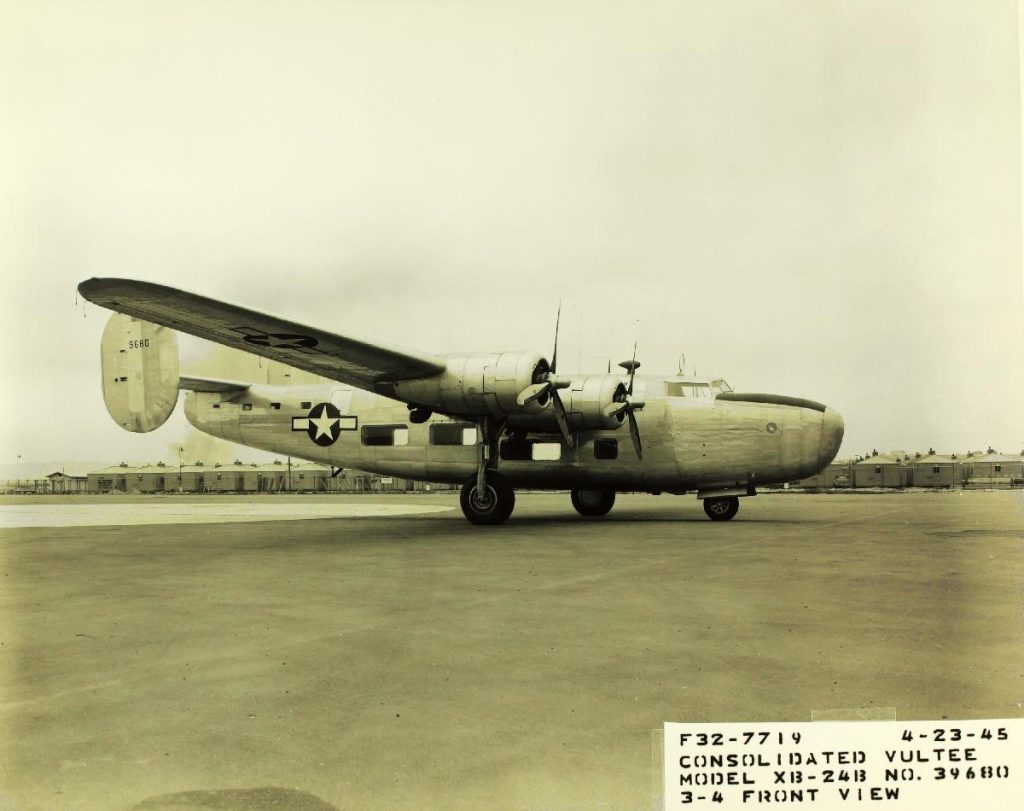
Today, only 13 examples have survived intact or have been restored in the postwar years. The oldest among them is LB-30/ Liberator Mk.I AM927/40-2366, which was later purchased in 1969 by the Confederate Air Force (now the Commemorative Air Force), and is maintained in airworthy condition out of Dallas, Texas. One of the former Indian Air Force B-24s, B-24J 44-44052/RAF s/n KH191, was returned to the United States from India via the United Kingdom and would join the Collings Foundation of Stow, Massachusetts. Originally flown under the historic schemes for All American and The Dragon and His Tail, it is now painted as Witchcraft. A third B-24 (LB-30 AL557, to be exact) is hoped to fly again as well after making a crash landing in Alaska in 1958 and is now being restored in Anderson, South Carolina. Others can be found on static display in museums such as the National Museum of the United States air Force in Dayton, Ohio, the Royal Air Force Museum’s location in Hendon, London, and the Indian Air Force Museum in Delhi, India.
Although it survives today in fewer numbers than aircraft such as the B-17 Flying Fortress and the B-29 Superfortress, the Consolidated B-24 Liberator was critical to the Allies’ success in WWII, from both a production standpoint of outproducing more bombers than the Axis could build, and from an operational standpoint of having more planes in the air to carry out missions day in and day out. The few remaining Liberators now serve as a testament to the men and women that built them, and the young airmen who flew them, both those who gave the ultimate sacrifice, and those lucky enough to come home again.
Today in Aviation History is a series highlighting the achievements, innovations, and milestones that have shaped the skies. All the previous anniversaries are available HERE







